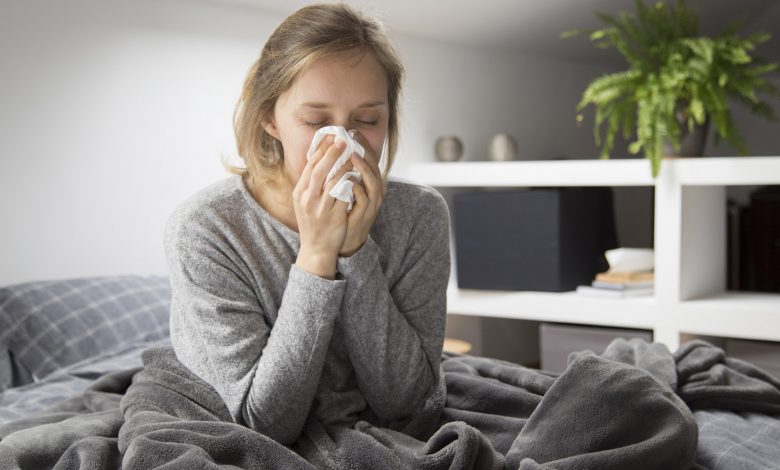Preventing Cold and Flu: Essential Tips for Staying Healthy

Cold and flu are common respiratory illnesses that can affect individuals of all ages, often leading to discomfort and a temporary decline in well-being. While they are caused by different viruses, both cold and flu share similar symptoms and are highly contagious. In this article, we will explore essential methods for preventing cold and flu, helping you stay healthy and reduce the risk of falling ill.
Understanding the Difference: Cold and flu are often confused due to their similar symptoms, but they are caused by different viruses. The common cold is usually milder and can cause symptoms like a runny or stuffy nose, sneezing, coughing, and a sore throat. In contrast, the flu (influenza) can lead to more severe symptoms, including fever, body aches, fatigue, and respiratory issues.
Prevention Methods:
1. Good Hygiene Practices: Practicing proper hygiene is crucial in preventing the spread of cold and flu viruses. Wash your hands frequently with soap and water for at least 20 seconds, especially after coughing, sneezing, or touching surfaces. If soap is not available, use an alcohol-based hand sanitizer.
2. Cover Coughs and Sneezes: When you cough or sneeze, cover your mouth and nose with a tissue or your elbow to prevent the release of droplets containing viruses into the air. Dispose of used tissues immediately and wash your hands afterward.
3. Avoid Close Contact: Try to avoid close contact with individuals who are sick, and if you are feeling unwell, consider staying home to prevent spreading illness to others.
4. Maintain a Healthy Lifestyle: Eating a balanced diet rich in fruits, vegetables, and whole grains can strengthen your immune system. Stay hydrated, exercise regularly, and get enough sleep to maintain overall health and immunity.
5. Flu Vaccination: Getting an annual flu vaccine is one of the most effective ways to prevent influenza. The vaccine helps your body develop antibodies to fight off specific strains of the virus.
6. Keep Your Environment Clean: Regularly disinfect frequently-touched surfaces such as doorknobs, light switches, and remote controls to reduce the risk of virus transmission.
7. Stay Informed: Stay updated on the latest health guidelines and recommendations from reliable sources, such as health organizations and government agencies. This will help you make informed decisions about your health and well-being.
8. Consider Personal Protective Measures: In situations where cold and flu viruses are prevalent, wearing a mask and maintaining physical distance from others can provide an extra layer of protection.
Preventing cold and flu requires a combination of good hygiene practices, healthy lifestyle choices, and staying informed about the latest health recommendations. By taking proactive measures to reduce the risk of infection, you can significantly lower the chances of falling ill and contribute to a healthier environment for yourself and those around you.
Common Sources of Influenza Transmission: Unveiling the Culprits Behind the Flu Spread
Influenza, commonly referred to as the flu, is a contagious respiratory illness that affects millions of individuals worldwide each year. The virus responsible for the flu can spread easily through various sources, contributing to seasonal outbreaks. In this article, we will explore the common sources of influenza transmission and shed light on the culprits behind the widespread spread of the flu.
1. Person-to-Person Contact: One of the primary ways the flu virus spreads is through direct person-to-person contact. When an infected person coughs, sneezes, or talks, they release respiratory droplets containing the virus into the air. These droplets can land on the mouths or noses of nearby people, who can then inhale the virus particles, leading to infection.
2. Contaminated Surfaces: The flu virus can survive on surfaces for a certain period, depending on factors like temperature and humidity. When a person with the flu touches a surface, such as doorknobs, light switches, or shared objects, they can leave behind the virus. Others who touch these contaminated surfaces and then touch their face (mouth, nose, or eyes) can introduce the virus into their bodies, leading to infection.
3. Airborne Transmission: In some cases, the flu virus can become aerosolized and remain suspended in the air for a brief period. This can happen in crowded or enclosed spaces with poor ventilation, where an infected person’s exhaled breath contains virus particles. People who inhale the air in such environments can be at risk of contracting the flu.
4. Close Contact Settings: Places where people are in close proximity to one another, such as schools, workplaces, public transportation, and healthcare facilities, are conducive to flu transmission. The virus can spread rapidly in these settings due to the increased likelihood of person-to-person contact and exposure to contaminated surfaces.
5. Asymptomatic Spread: It’s important to note that some individuals infected with the flu virus may not show symptoms (asymptomatic) but can still spread the virus to others. This makes identifying and isolating infected individuals more challenging and emphasizes the need for preventive measures.
6. Travel and Globalization: As people travel across regions and countries, they can carry the flu virus with them. International travel can facilitate the rapid spread of the virus, leading to global outbreaks and epidemics.
The flu virus spreads through a variety of sources, with person-to-person contact and contaminated surfaces being the most common modes of transmission. Preventing the spread of the flu requires adopting good hygiene practices, such as regular handwashing, covering coughs and sneezes, and avoiding close contact with sick individuals. Public health measures, such as flu vaccination campaigns and promoting awareness about preventive strategies, play a vital role in minimizing the impact of influenza outbreaks. By understanding the sources of flu transmission and taking appropriate precautions, individuals and communities can contribute to reducing the spread of this contagious respiratory illness.
















